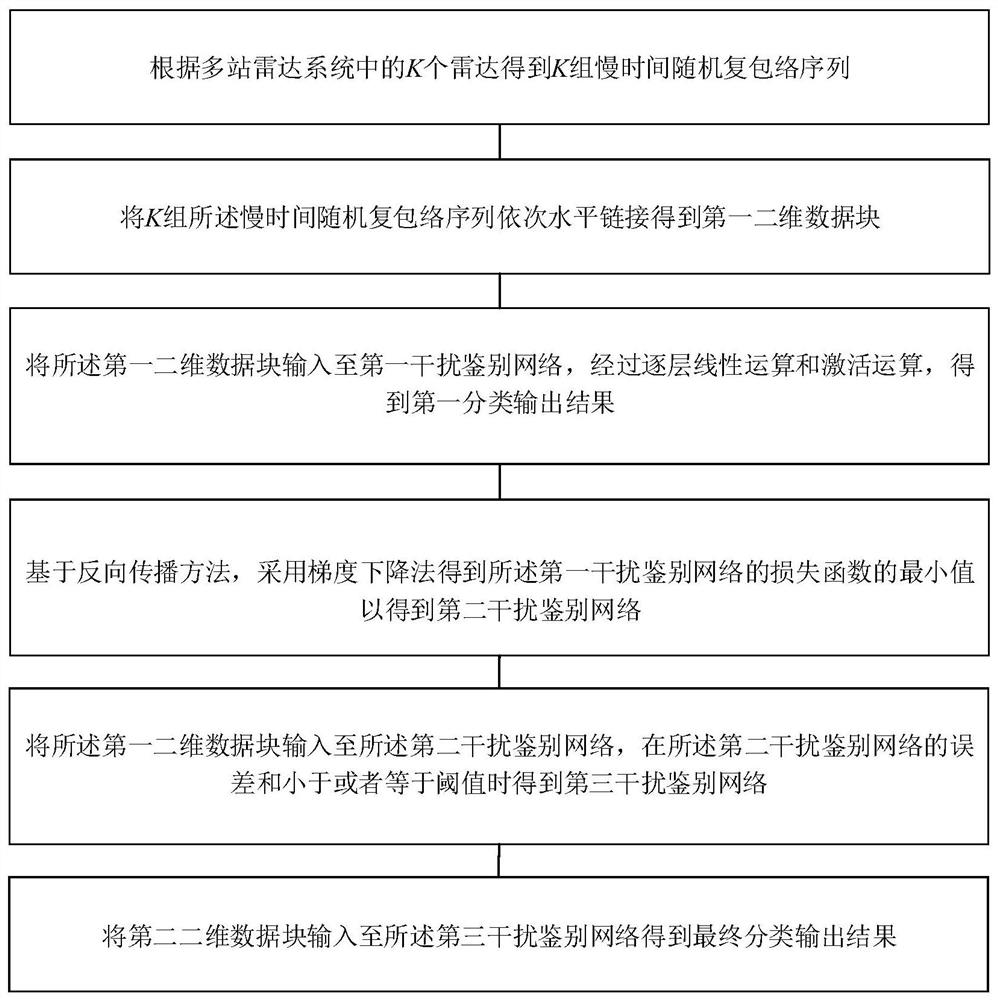Multi-station radar system interference identification method based on convolutional neural network
A convolutional neural network, radar system technology, applied in neural learning methods, biological neural network models, neural architectures, etc.
- Summary
- Abstract
- Description
- Claims
- Application Information
AI Technical Summary
Problems solved by technology
Method used
Image
Examples
Embodiment 1
[0070] See figure 1 , figure 2 , figure 1 It is a schematic flowchart of a multi-station radar system interference identification method based on a convolutional neural network provided by an embodiment of the present invention, figure 2 It is a schematic flowchart of a convolutional neural network identification process provided by an embodiment of the present invention. This embodiment provides a multi-station radar system interference identification method based on a convolutional neural network. The multi-station radar system interference identification method includes steps 1 to 6, wherein:
[0071] Step 1. Obtain K sets of slow-time random complex envelope sequences according to K radars in the multi-station radar system, where K≥2.
[0072] Specifically, see image 3 , it is assumed that there are K node radars in the multi-station radar system in this embodiment, forming a networked detection system, and each radar will obtain a set of slow-time random complex en...
PUM
 Login to View More
Login to View More Abstract
Description
Claims
Application Information
 Login to View More
Login to View More - R&D
- Intellectual Property
- Life Sciences
- Materials
- Tech Scout
- Unparalleled Data Quality
- Higher Quality Content
- 60% Fewer Hallucinations
Browse by: Latest US Patents, China's latest patents, Technical Efficacy Thesaurus, Application Domain, Technology Topic, Popular Technical Reports.
© 2025 PatSnap. All rights reserved.Legal|Privacy policy|Modern Slavery Act Transparency Statement|Sitemap|About US| Contact US: help@patsnap.com



